Assassin's Creed Origins, Project Cars 2, Rainbow Six Siege
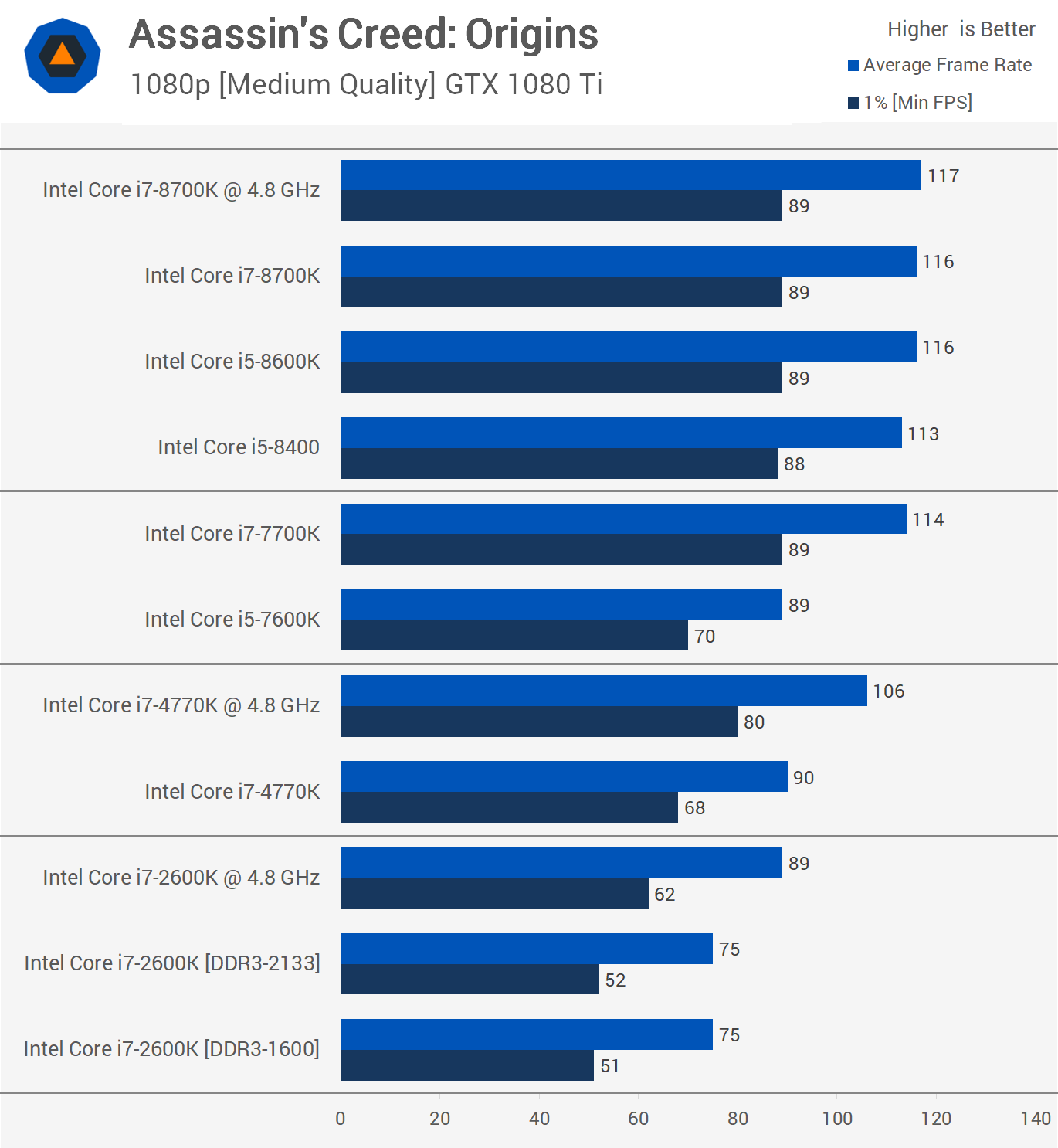
Assassin's Creed Origins buckles the Core i7-2600K, breaking it down to just 52fps at times before we overclock. Once overclocked we still see dips as low as 62fps and this meant it was around 30% slower than the 8700K, which I should note is GPU limited even with the medium quality preset enabled.
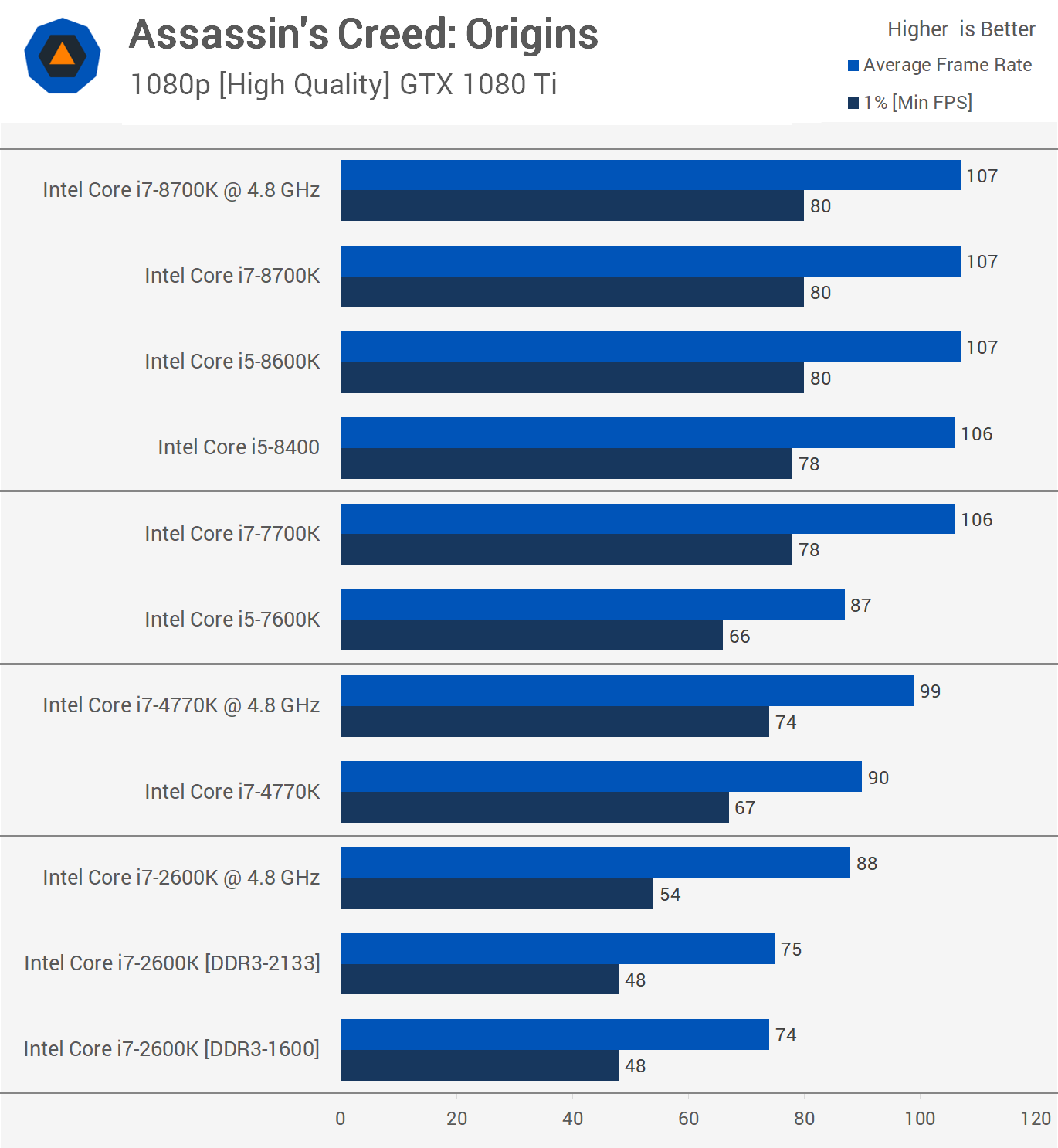
The margin for the 1% low result grows with the high quality preset enabled. Now the overclocked 2600K is 33% slower and of course the 8700K is still GPU limited. The 2600K's average frame rate result is more impressive, but that 1% low figure clearly shows the aging quad-core struggles with this title, even when overclocked.
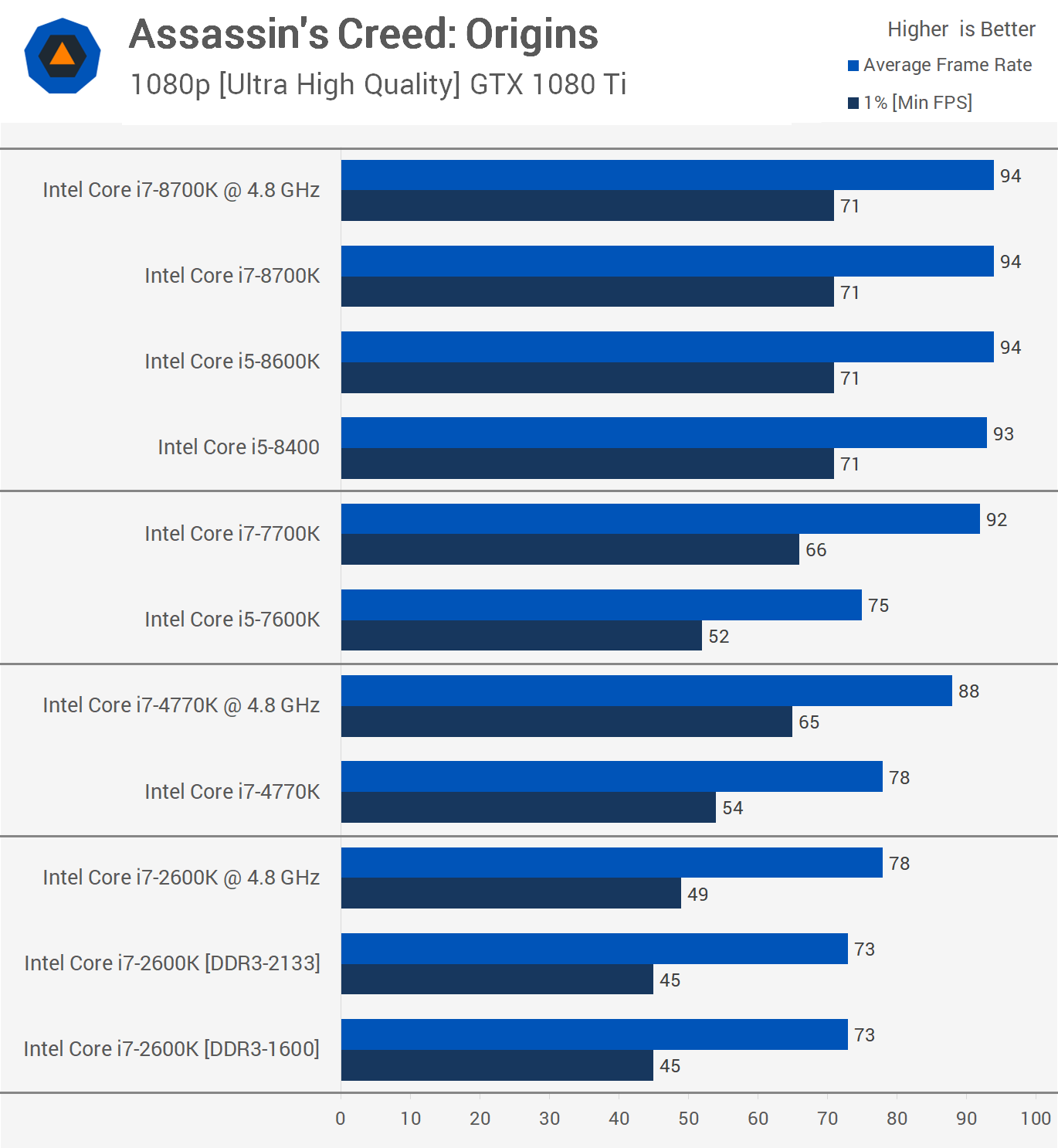
Now even with the ultra high quality settings enabled the overclocked 2600K trails by a country mile when looking at the 1% low data. Here it was still 31% slower than the 8700K which is still heavily GPU bound. I had assumed when testing the 4770K that its poor minimum fps performance was down to the use of slower DDR3 memory but limited memory bandwidth doesn't appear to be the issue where when comparing the 2600K with 1600 and 2133 memory.
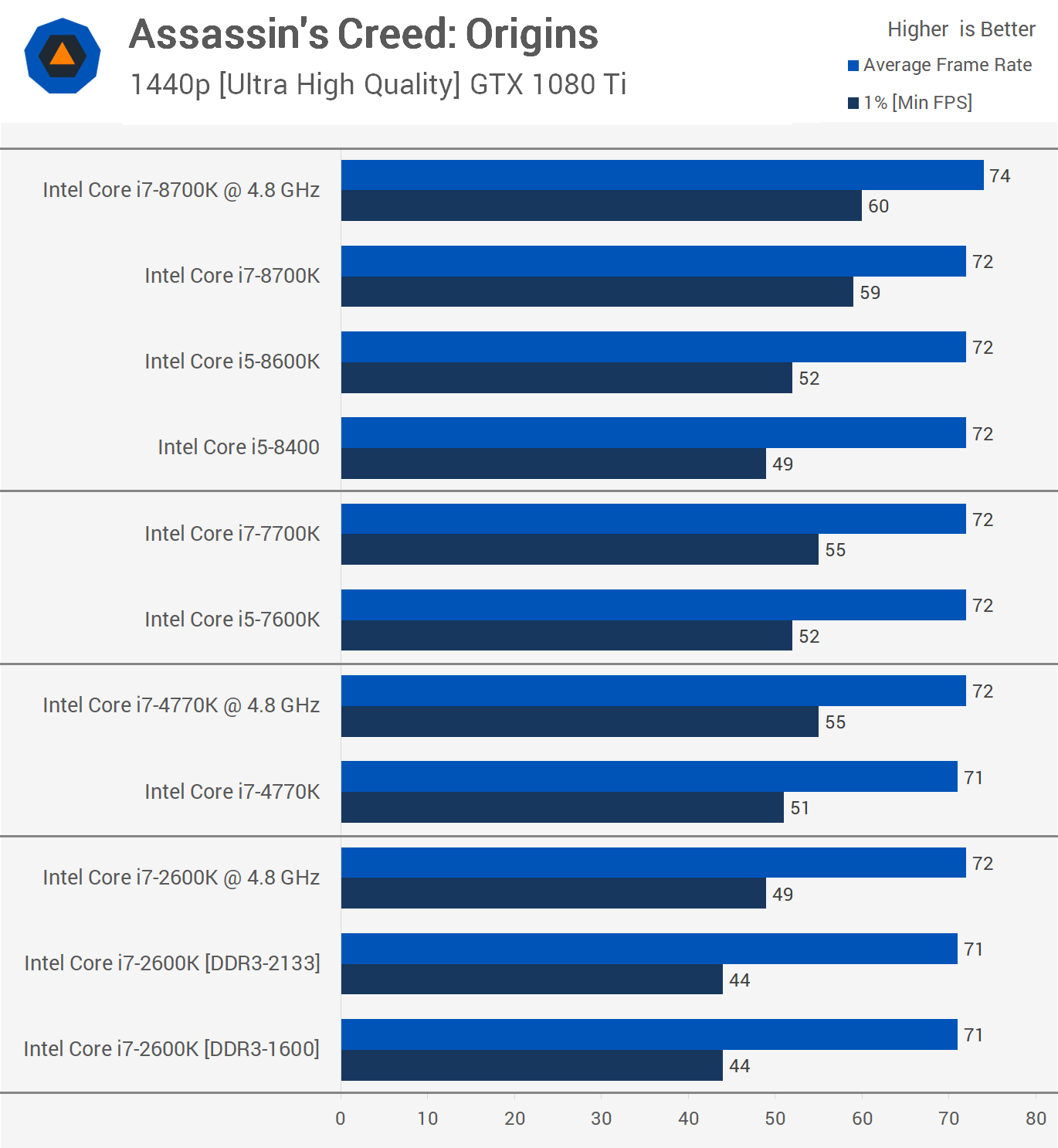
Interestingly at 1440p we start to see some separation between the various eighth-generation CPUs when looking at the 1% low result which is unexpected. Although the average frame rates are much the same across the board there is a reasonably large variance in the 1% low figures. Here the overclocked 2600K was still 18% slower than the 8700K, though it did match the Core i5-8400.

Like F1 2017, the frame rates are quite high in Project Cars 2 with the 2600K, though despite that it was still a country mile behind the 8700K. With both CPUs overclocked the 2600K was 22% slower for the average frame rate and 28% slower for the minimum frame rate. Overclocked, the 2600K was able to pull ahead of the 4770K and although much slower than the overclocked 8700K, looked pretty solid overall.

Now this is peculiar, the overclocked 2600K for the first time in our testing is able to roughly match the overclocked 4770K. Honestly, I was expecting to see a lot more of this but for whatever reason the overclocked 2600K has struggled to keep pace with the stock 4770K.

The trend continues with the ultra quality settings and here the overclocked 2600K is just 16% slower than the 8700K or 20% slower if we look at the 1% data.

However, jumping up to 1440p almost neutralizes the playing field entirely and now the overclocked 2600K is less than 10% slower than the 8700K. The 2600K also enjoyed a solid 22% performance boost from the overclock.

With Rainbow Six: Siege, the 2600K is back to getting pummeled at high frame rates. Despite an almost 20% increase in performance once overclocked, it was still slightly slower than the stock 4770K. As a result, the overclocked 2600K was 31% slower than the overclocked 8700K.

The margin is reduced to 26% with the high quality preset enabled but even so the 2600K is really showing its age in this title. Of course, it did maintain well over 100fps at all times but in relation to the newer CPUs tested, it looked slow.
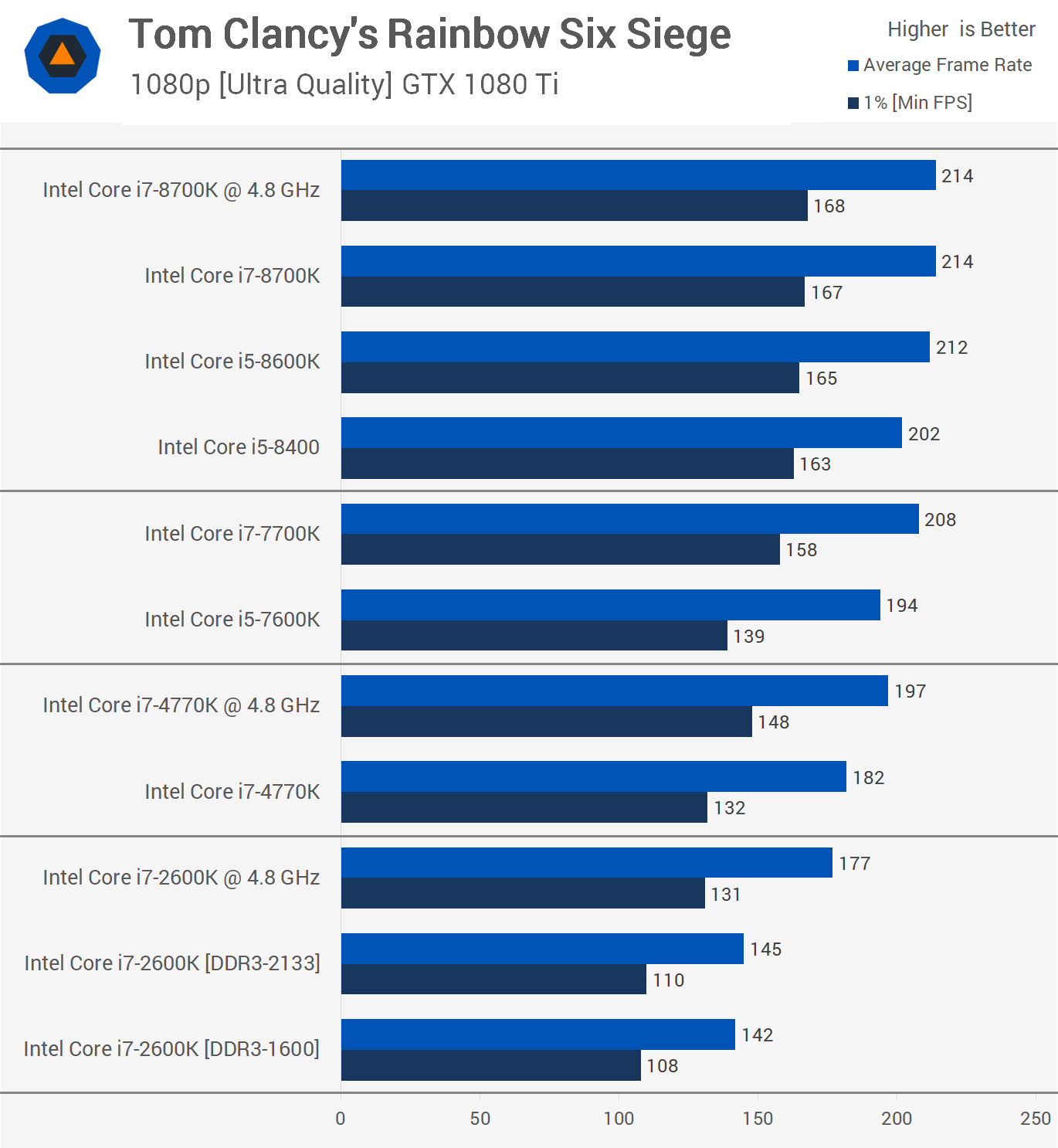
As we increase the GPU load the margins continue to close and now the 2600K is just 17% slower than the 8700K when comparing the average frame rate, though it was 22% slower for the minimum frame rate.

Those gaming at 1440p will notice less of a difference between the various CPUs tested. That said, despite just 6% separating them for the average frame rate, the overclocked 2600K was still 18% slower than the 8700K when looking at the 1% low results.
